
by Karen Rubin
Travel Features Syndicate, goingplacesfarandnear.com
What I love most about Martha’s Vineyard, Massachusetts, is that this single island, just 100 square miles, holds such diversity of culture, heritage, ecology. You can find a place on this island to suit whatever mood or craving you have – Edgartown’s austere conformity; Oak Bluffs’ color and whimsy; Vineyard Haven’s seagoing tradition; Wampanoag Indian reservation; fishing villages, beaches, nature preserves, lighthouses, farms. Go a few miles and it’s like crossing a border to another state or state of mind.
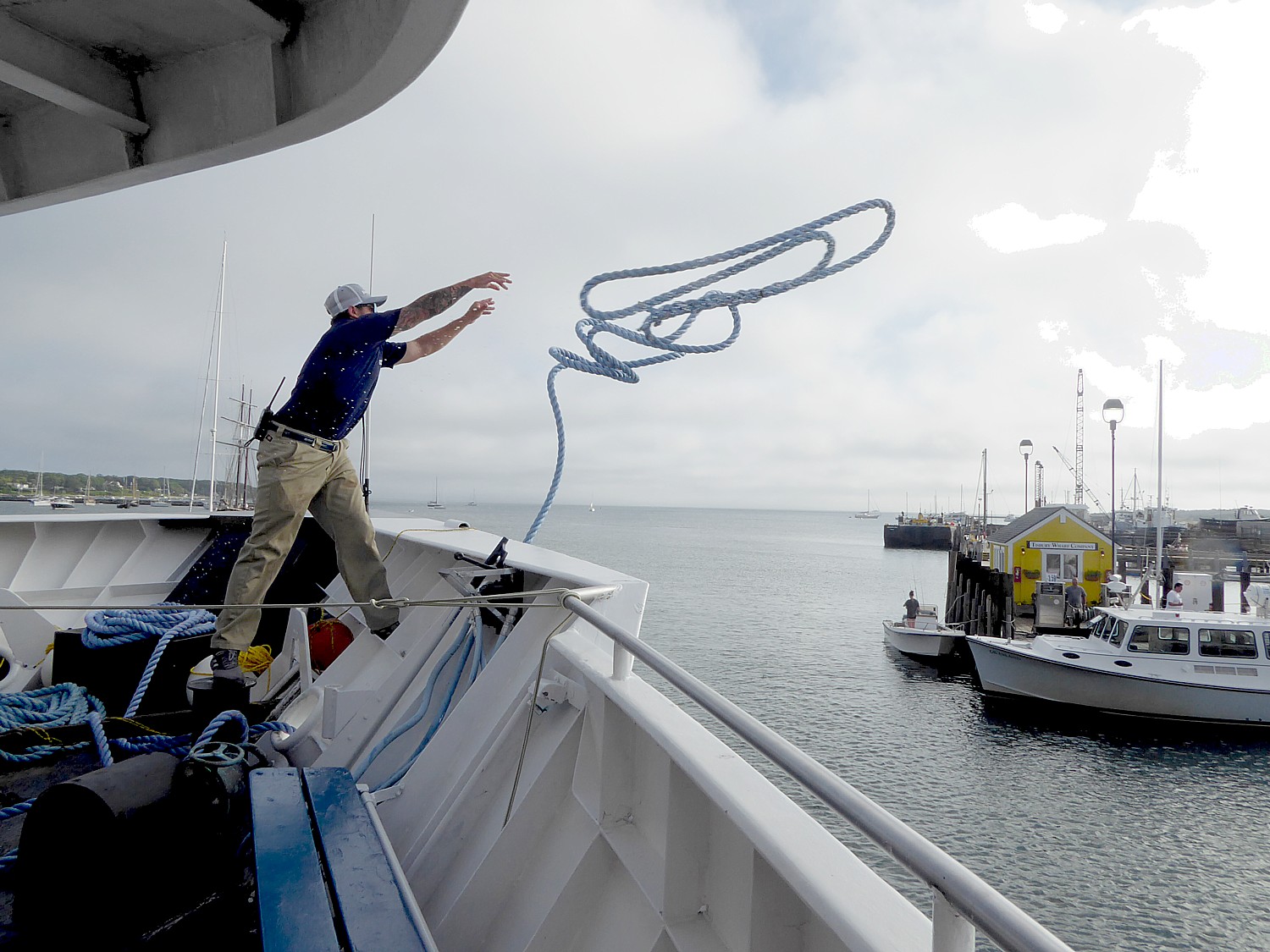
We arrive after a two-hour sail from New Bedford aboard Blount Small Ship Adventures’ Grande Caribe at 7:30 in the morning. I watch with great admiration how Captain Patrick Moynihan maneuvers us into the Tisbury Marina in Vineyard Haven, where billionaires have their yachts (our 84-passenger ship is about the size of the more ambitious of them), swinging us around so we are perpendicular to the pier. The first mate throws out a line to lasso the pylon.
Across the way, we can see where the big ferries come in from Falmouth, Hyannis, Nantucket, New Bedford, MA; Quonset Point, RI and New York.
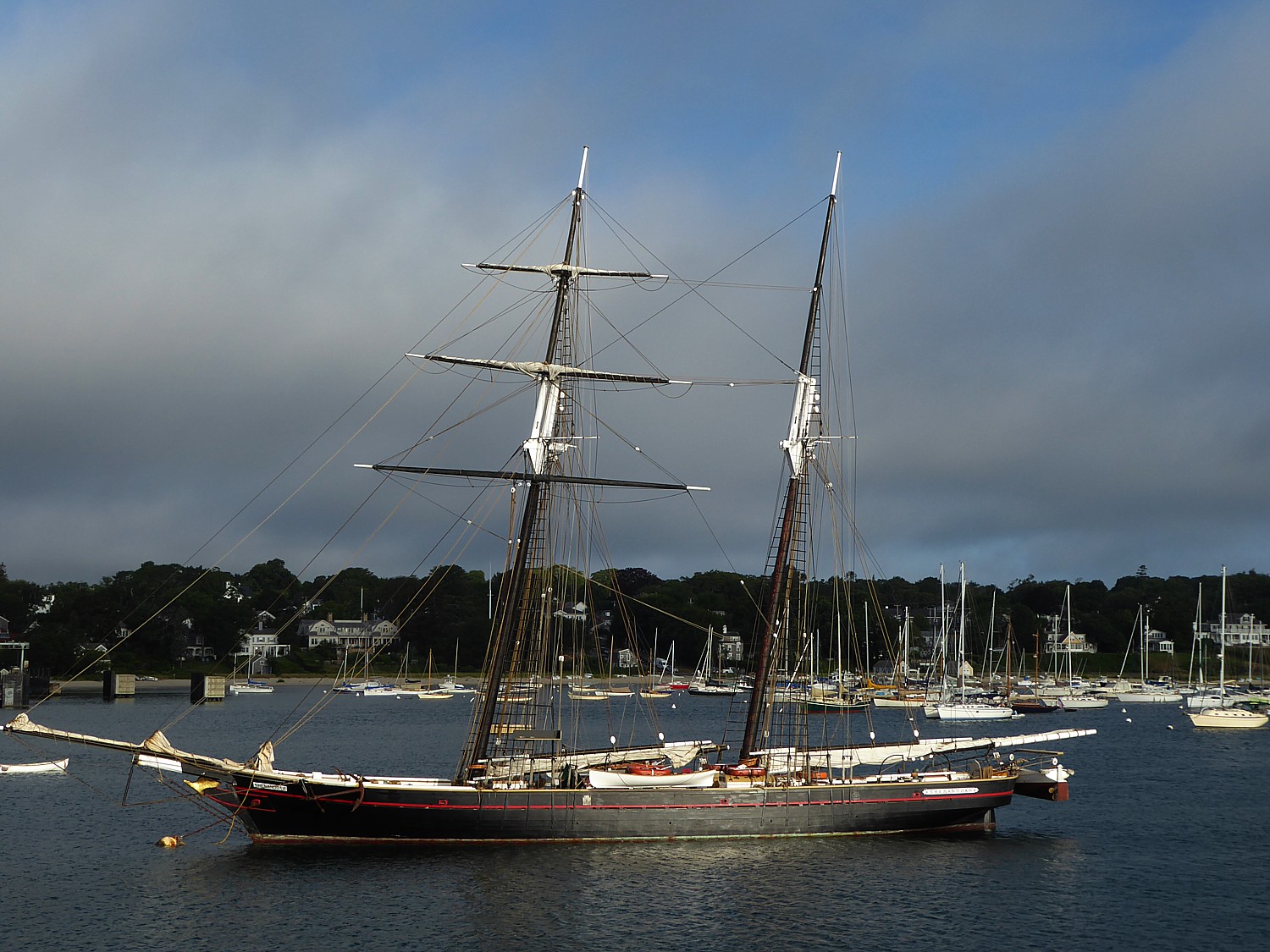
We see historic sailing vessels, like the tall ship Shenandoah, that add to the ambiance. Docked at the marina, we can go on and off the ship at will.It’s our third day of our New England Islands cruise – an itinerary that had to be completely rearranged because of storms at sea.
The best way to experience Martha’s Vineyard if you only have a day and especially if there are mobility issues is with an island tour. I am traveling with my brother who has some difficulty walking. We are recommended to Oak Bluffs Wharf & Land Company’s island tour, and we recommend it for both its length and scope. You come away feeling you really know Martha’s Vineyard from end to end, and more significantly, its people.
The tour company operates out of the Dockside Inn, an absolutely charming place a short walk from the ferry terminal; the inn (which I take note of for a return visit) and the tour company are both owned by John Tiernan (9 Circuit Avenue Ext., Oak Bluffs, MA, 508-684-8595, www.DocksideInnMV.com)
We hail an Uber and arrive at the charming inn in plenty of time to enjoy rocking in a wicker chair on the porch and watching the world go by (at least the people coming and going from the ferry) before we start the tour.
In the course of 2 ½ hours (more like 3) we get to visit all six of the island’s towns and go as far as Aguinnah and the Gay Head Cliffs.
Our guide, Linda, has lived on Martha’s Vineyard for 25 years but says her teenage grandkids still refer to her as a “washashore.” She is vivacious and interesting, as she drives the van and narrates about the points of interest, but also, gives us a real feeling for the people who live here and have been drawn here since the first European settlers arrived in 1642.
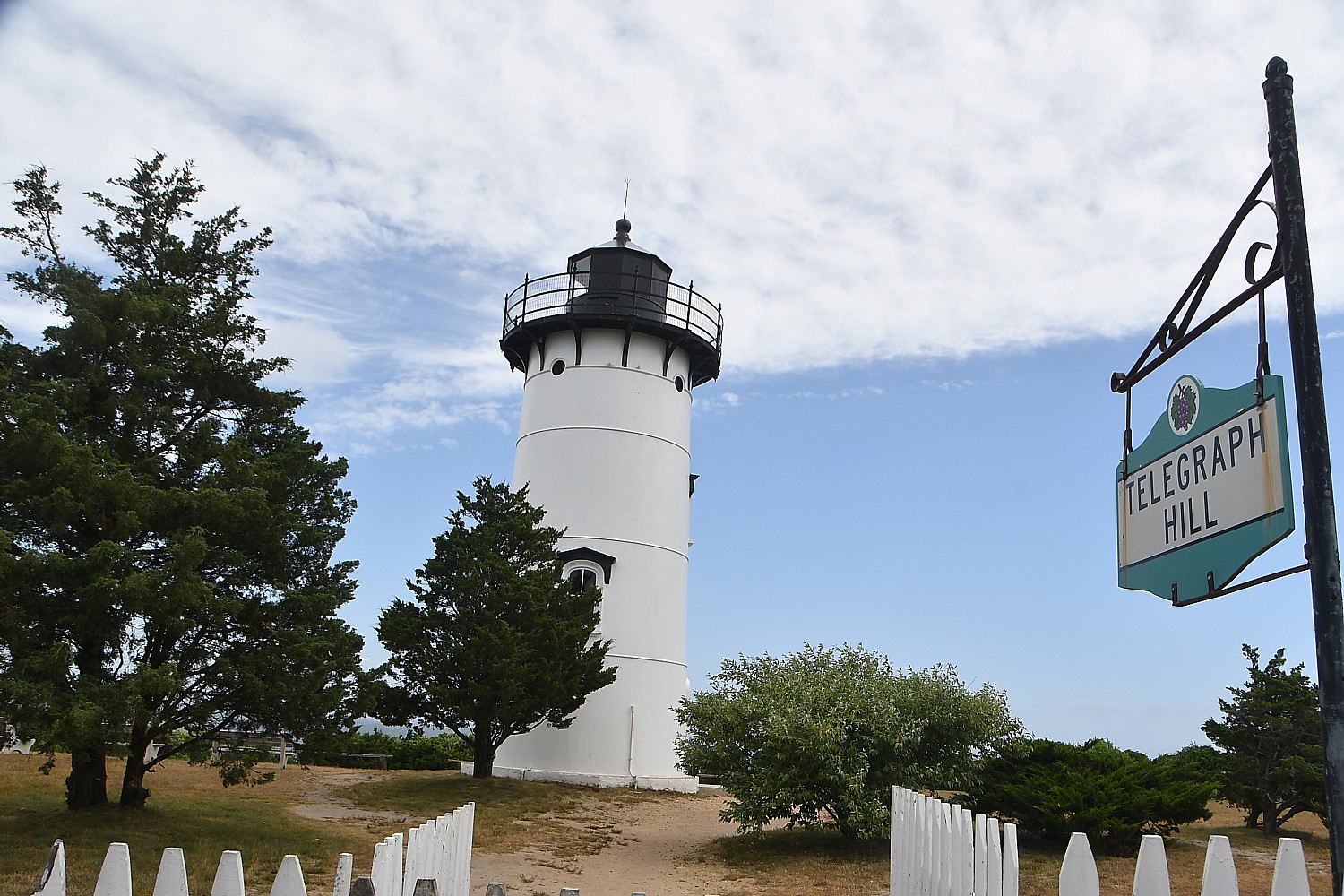
Martha’s Vineyard is home to some 17,000 people year-round (I envy them); the population swells to 100,000 in summer. Traffic at the five-corners intersection (there are only two traffic lights on the island and these are on the bridges; no parking meters, neon signs, or billboards either) becomes a dance and a test of neighborly good will.
I could definitely live here. I’d be right at home among all the writers, journalists, musicians, artists, political people – the diversity of their backgrounds is laudable:
There’s Gloria Swanson’s house given to her by Joseph Kennedy. At West Chop, she ticks off prominent people who lived here (I note the media people and writers); Mike Wallace, Walter Cronkite, Lillian Hellman, Carly Simon. She points to where Charles Lindbergh and wife came for respite after their baby was kidnapped and killed; where John Kerry just bought property; She clicks off names of people who live in the area: Diane Sawyer (“Chip Chop” house); Mia Farrow; Katherine Graham (Washington Post), Beverly Sills; here’s where Princess Diana stayed here while divorcing; here’s a horse farm that was owned by James Cagney (still in his family); and here’s Lambert’s Cove, where Carly Simon is a regular (she always stops to ask for directions).
Michael J Fox had a home in Aquinnah, even named his daughter Aquinnah; Jackie Kennedy Onassis bought 400-acre spread, now owned by Caroline Kennedy Schlossberg and Obama, who had regularly vacationed on Martha’s Vineyard during his presidency, just bought a piece of it. Driving through Chilmark, Bob Villa (“This Old House); author David McCullough (“John Adams”), Judi Blum, Susan Bronck, Philip Craig, Tom Clancy, Geraldine Brooks, and Jim Belushi; in Oak Bluffs, Harvard Professor Henry Louis Gates Jr. (PBS “Finding Your Roots”), Obama adviser Valerie Jarrett.
It’s the atmosphere, the vibe, the ingrained culture of this place that makes it so accepting, so comfortable. I see it, feel it myself as I walk about.
It starts with Martha’s Vineyard’s early European settlement – not the Puritans who settled Plymouth, but Quakers who were more tolerant and respectful of the Wampanoag Indians and later the Cape Verdeans who were recruited to whaling, and still later African Americans and Jews who were barred elsewhere.
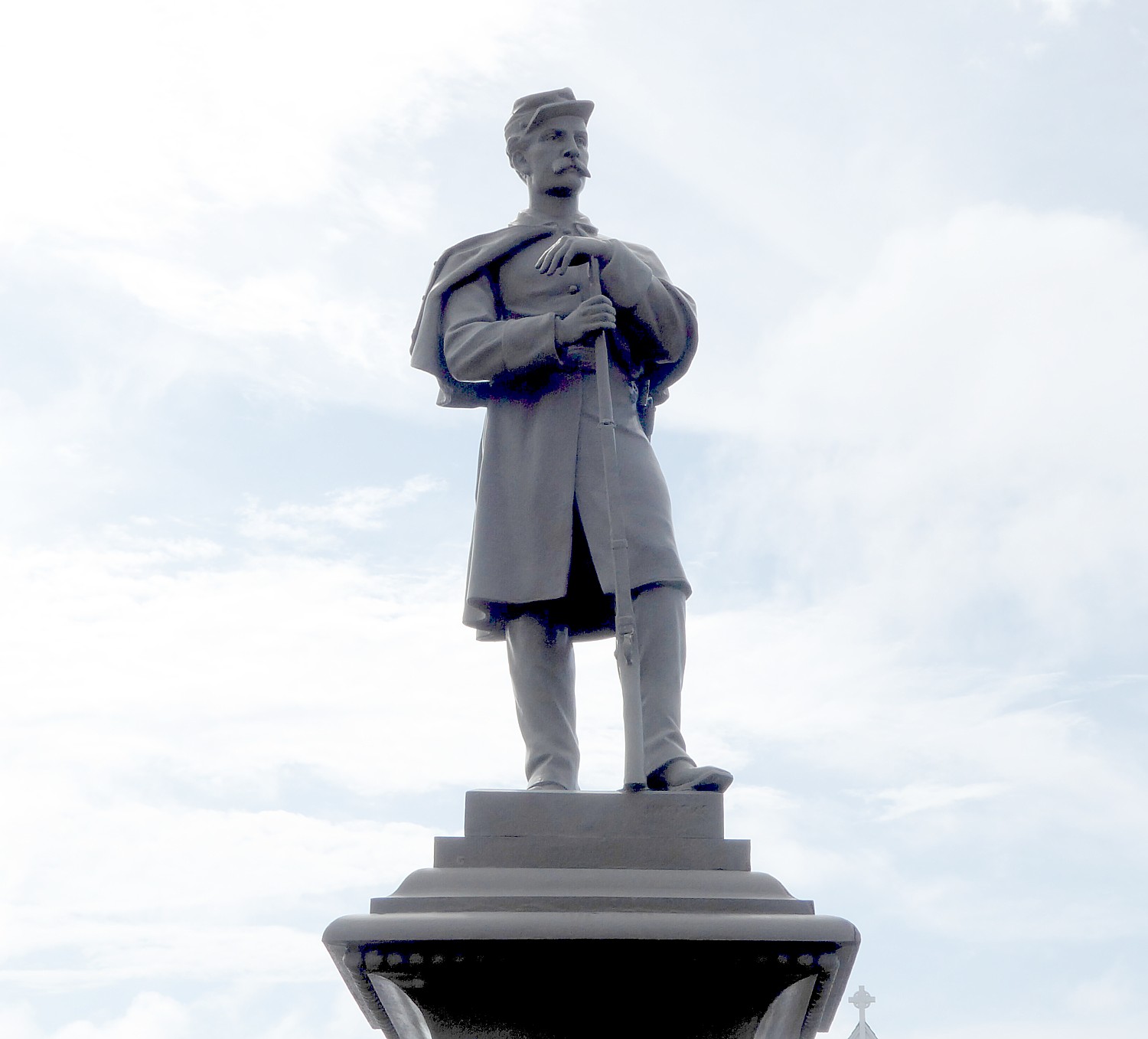
It is most emblematic for me when I come upon the statue of a Union soldier in Ocean Park. Soldiers’ Memorial Fountain was dedicated in 1891 by Martha’s Vineyard Herald editor Charles Strahan, who had served in a Virginia regiment of the Confederate Army. He wanted to express gratitude and remorse in his adopted home and erected the statue in honor of local Union veterans. Then, in 1925, residents reciprocated by adding a tablet in recognition of Confederate soldiers. The statue, with a fountain-fed water trough for horses, originally stood at the foot of Circuit Avenue; it was restored in 2001 and rededicated at this site on its 110th anniversary. It is one of the few expressions of reconciliation after the Civil War that I have ever found.
Linda notes that Martha’s Vineyard has a rich African American history; a heritage trail through the island has 20 sites, including the Shearer Cottages, an inn to accommodate African American visitors, which was started by Charles Shearer, a freed slave who came to the Vineyard and started a laundry service, which is still run by his great granddaughter Doris Jackson. There is also Adam Clayton Powell Jr.’s house. And, Linda later points out when we are in Aquinnah, “The first African American woman to own her own property. Rebecca Amos, was a former slave married to Wampanoag, and when her husband died, she acquired his home.”
Inkwell Beach, the town beach in Oak Bluffs, Linda notes, was the first beach to be integrated. Indeed, when I return on my own, as I look around at the gatherings of people, you see genuine integration, not just neighbors –as in the historic Methodist camp meeting grounds – but in gatherings of friends and multi-racial families along the beach, the promenade, the main street, sitting on a bench at the Union Chapel.
As we travel in the comfortable van, Linda relates the island’s history:
Martha’s Vineyard was visited by Scandinavians as long ago as 1000 AD, naming it Vineland. The Italian explorer Verrazano sighted the island in 1524. But the most significant explorer was Bartholomew Gosnold of Falmouth, England, who in 1602 sailed into the Elizabeth Islands (he named), naming Cape Cod, and Martha’s Vineyard (named for his mother-in-law who financed the voyage).
In October 1641 Thomas Mayhew, an English merchant and settler of Watertown, Massachusetts, bought Martha’s Vineyard, Nantucket and Elizabeth Islands for 40 pounds from Lord Stirling and Sir Ferdinando Gorges, who had been granted ownership by the English Crown. Mayhew, who made himself governor for life, sent his son, Thomas Jr. with a few families to settle the island; Thomas required that the settlers purchase their land from the natives and from all accounts, treated the Wampanoag fairly and with respect. (This is likely why Martha’s Vineyard did not suffer the same violence as Plymouth did in the bloody King Philip’s War, 1675–76, in which native Americans made a final stab at forcing English settlers out of New England). “The diverse peoples lived in peace and the island also became a haven for people of color, those of African and Cape Verdean descent.”
Mayhew sent his son, Thomas Mayhew Jr., a missionary, “to ‘take savage out of natives’ so they would be more forthcoming with land (to sell to settlers),” Linda relates. Mayhew learned to speak Algonquin from an Indian man named Hiacoomes. Mayhew was Quaker, who believed in the “inner light” and that it was not necessary to believe in Jesus (as I subsequently learn in Nantucket). The converted Indians settled in their own village, “Christiantown”, where could live separately. They had their own meeting house and cemetery where Christianized natives were buried.
“Many natives died of disease but not the Christian ones, so they were more amenable to conversion,” Linda says.
Still, their numbers suffered after European settlement: in 1642, there were 3,000 Wampanoag; by 1764, their numbers had dwindled to just 300.
We pass an indigenous great white oak tree simply called “The Oldest Tree”, which is 400 years old (Alfred Eisenstadt took a famous photo of the tree).
Linda points to a dirt road named Tea Lane, the oldest road to the ocean. “Martha’s Vineyard had its own Tea Party – smuggled tea, buried it. Later, during Prohibition, they smuggled rum, and in 1970s, smuggled marijuana.”
We drive into Menemsha, a working fishing village (scenes from “Jaws” were filmed here and the Harrison Ford movie version of “Sabrina” used a charming cottage. Linda, who mentions that she is the daughter of a lobsterman, says it is popular for people to buy a fresh fish dinner and watch the sunset.
As we come into Aquinnah, where the Wampanoag reservation still exists, and where most of the remaining native population live, Linda relates how the whaling captains, knowing of the natives’ prowess harpooning whales that got beached, would try to recruit them. Herman Melville spent a lot of time talking with Amos Smalley, the first Indian to harpoon a whale single-handedly, who was very likely the model for his Queequeg character in “Moby Dick.”
Indigenous Wampanoag (“people of the first light”) have lived on Martha’s Vineyard for millennia. Nearly 1,000 are still listed on tribal rolls and, of these, 150 live in the southwestern 3,400-acre peninsula of Aquinnah, designated a reservation, and another 150 live elsewhere on the island.
The town of Aquinnah ends in cliffs once called Gay Head (because of the ‘gay’ appearance given to it by stripes of variegated clay and sand of which it is composed) and now called Clay Cliffs at Aquinnah. The one mile of exposed cliffs rise dramatically 150 feet feet above sea level.
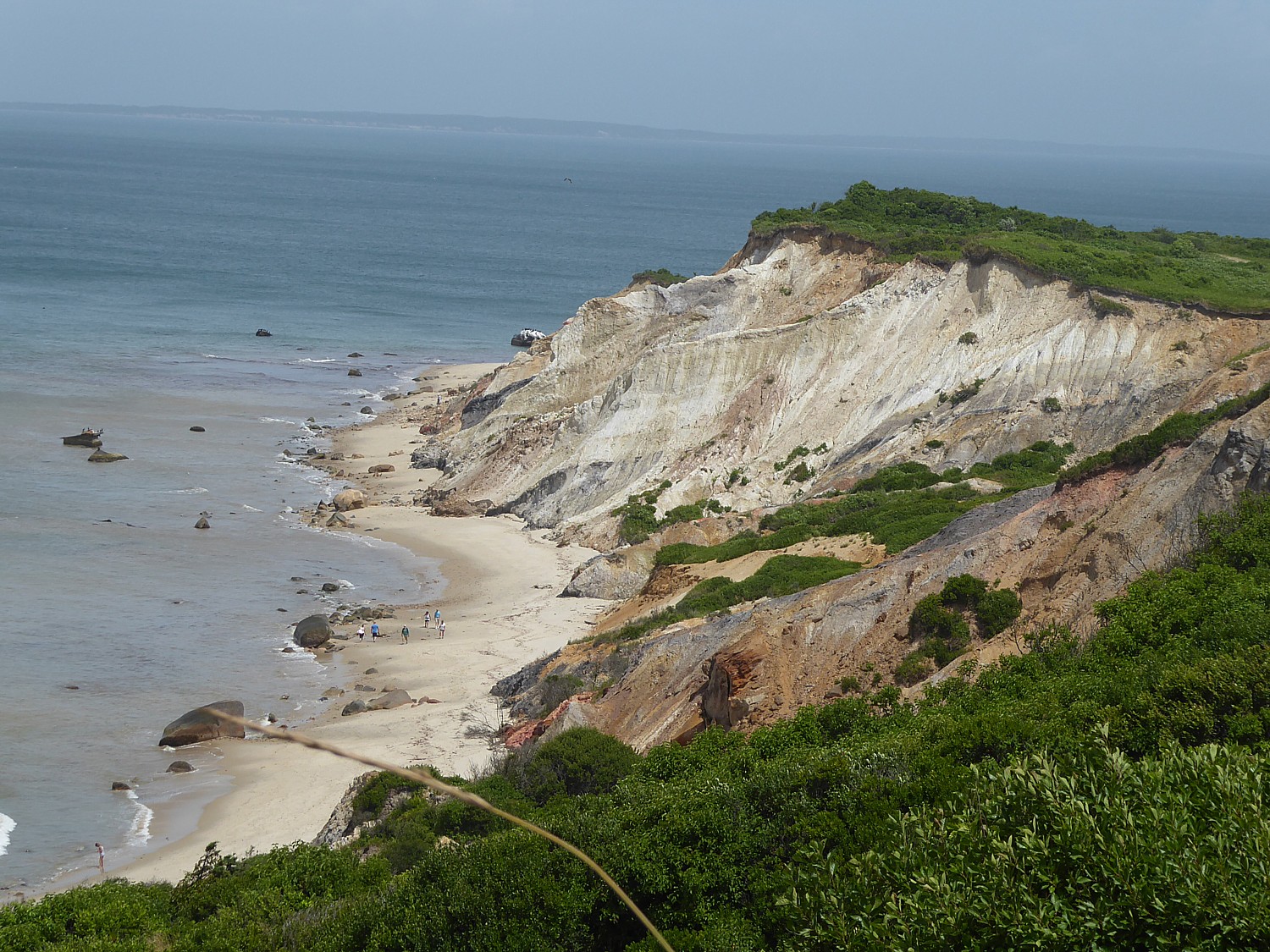
The pre-glacial sedimentary formation shows a cross section of strata from the Cretaceous through Pleistocene Ages, documenting geologic phases on the continental shelf from 100 million years ago. The cliffs are one of the Island’s biggest tourist attractions. Erosion, though, has forced the island to move the lighthouse, at a cost of $2 million.
Linda stops here to let us explore for about a half hour – take in the stunning view that includes a lighthouse (that had to be moved further inland) and visit a small market that includes a shop operated by Wampanoag, the first permanent settlers of the island.

The hiking sticks (versus a cane as an assist for those who have trouble walking) really come in handy here, to make it up even the short, but pebbly slope. I meet a woman who is also using hiking sticks instead of a cane, and she confirms my theory: they provide better balance, let you stand up erect and walk more naturally, and use the upper body, relieving some pressure on the legs; added benefit: you look more like an athlete. “And I’m a nurse,” she exclaims.
You can buy wampum jewelry in one of the shops at the cliffs, where there are also food stands, and restrooms.
There also is a trail to the lighthouse and you can climb up to the light, or (with more time), hike a steep path down to water. We opt to take the short path that takes us to a fabulous view of the cliffs and the lighthouse.
There is also a relatively new Aquinnah Wampanoag Indian Museum (in what was the Vanderhoop residence, a large Wampanoag family who run a fishing charter business).
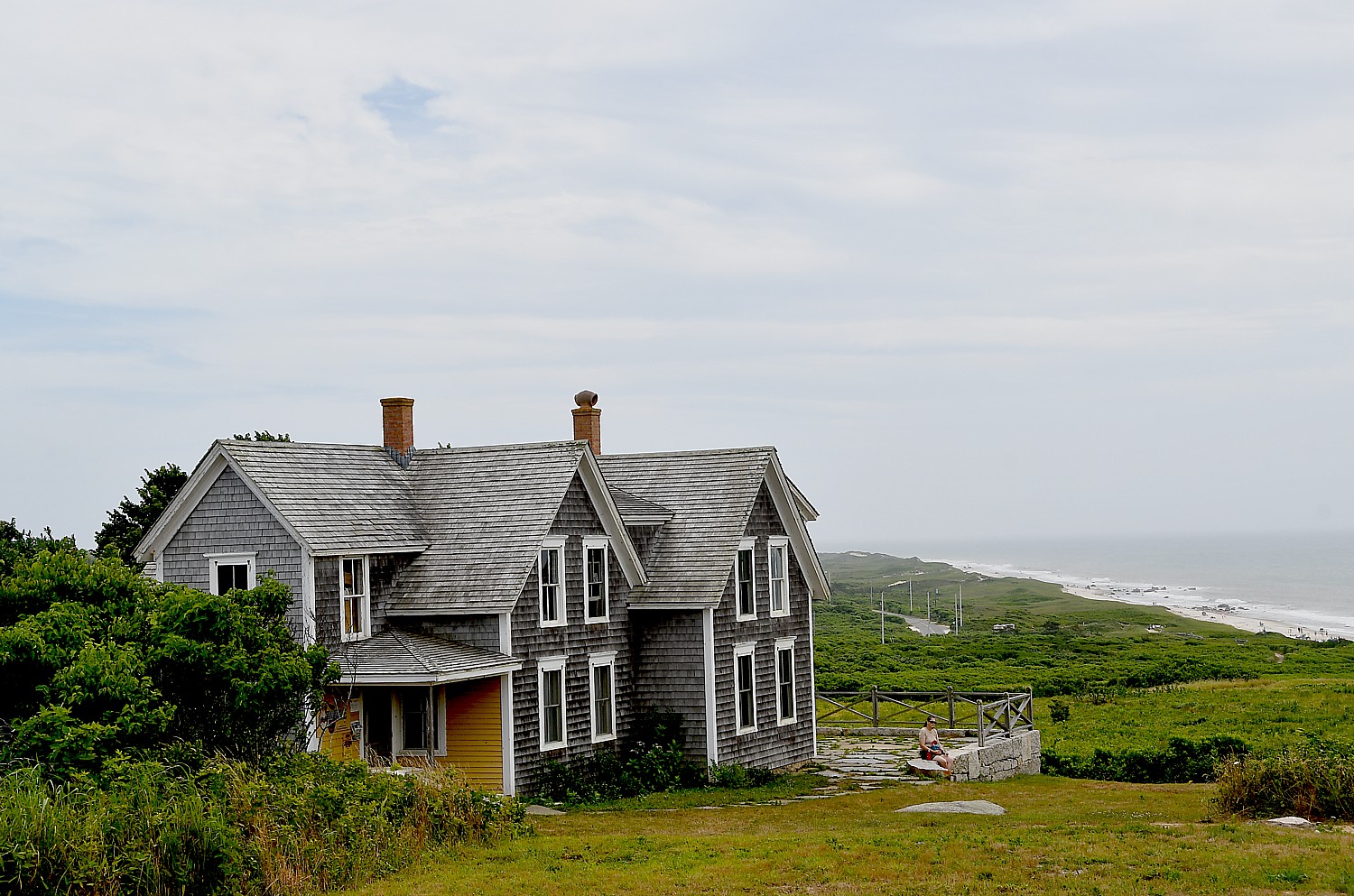
“Jackie [Onassis who purchased 400 acres of property in Aquinnah] had to negotiate with Wampanoags for beach access from her property.”
As we drive through Chilmark, known for its sheep, Linda relates how, in September 1778, a British fleet of 40 ships sailed into Vineyard Haven harbor, after having burned New Bedford and Fairhaven. Soldiers burned and pillaged vessels and farms.
“The British said there wouldn’t be bloodshed in Martha’s Vineyard if the settlers delivered 10,000 sheep and cattle in five days.” They had no choice but to comply, but one, where we pass the Alan Sheep Farm, hid six sheep in the basement (we see descendants of those sheep in the fields today). But the economy was decimated.

Linda relates one of the most interesting aspects that go to the heart of Martha’s Vineyard culture: Some early Vineyard settlers carried a gene for deafness (the first known deaf one was Jonathan Lambert, 1694), and over years of marriage, generation after generation was born with hearing loss. At one point, one in four children was born deaf. There were so many deaf people on the Vineyard (the greatest concentration in Chilmark) that they developed a sign language, Martha’s Vineyard Sign Language (MVSL), which was later incorporated with mainland signs to form American Sign Language.
Sign language was so accepted on the Vineyard that a newspaper marveled in 1895 at the way the spoken and signed languages were used by both deaf and hearing residents. People moving to Chilmark actually had to learn sign language in order to live in the community. Deafness was so common, it was never considered to be a handicap. “The intermarriages persisted and the deaf population of Chilmark and the rest of the Vineyard continued to propagate. It would have kept growing if not for the growth of deaf education on the mainland. As deaf Vineyard children attended schools off-island, they tended to settle off-island, married mainland mates, and gradually the deaf Vineyard population died out. The last deaf Vineyard native passed away in the 1950s.”
There are other aspects of Chilmark: Chilmark Chocolates, which attained national renown after Ted Danson and Mary Steenburgen presented a box to Ellen DeGeneres, is notable because the couple that own the chocolate company had a disabled son who enjoyed working in the store; now they only hire disabled.
The island also has Camp Jaberwocky. Founded in 1950 by the Lemb family it was the first overnight camp for children with cerebral palsy. “We see the kids every year. It still costs same as in 1950.” (Later I see the red bus carrying children to the camp.)

Linda stops at John Belushi’s grave where people often leave bottles of Jack Daniels and rocks – not because of the Jewish tradition, but a reference to his chosen epitaph: “I may be gone, but/Rock and Roll lives on.”
“He had said, ‘Martha’s Vineyard is the only place I can get good rest’.”
Several of the sights she points out were used in making the movie “Jaws,” (despite the setting supposedly being Nantucket). One of them is a bridge where there is a prominent sign, “No jumping,” that everyone jumps off.
Beginning in 1765, Vineyard men became engaged in whaling, but when the numbers of whales near the island were exhausted, the ships sailed further and further away, with voyages lasting three to five years. By 1850, Vineyard whaling ships were found on every ocean; there would have been 50 ships out of Edgartown at any one time.
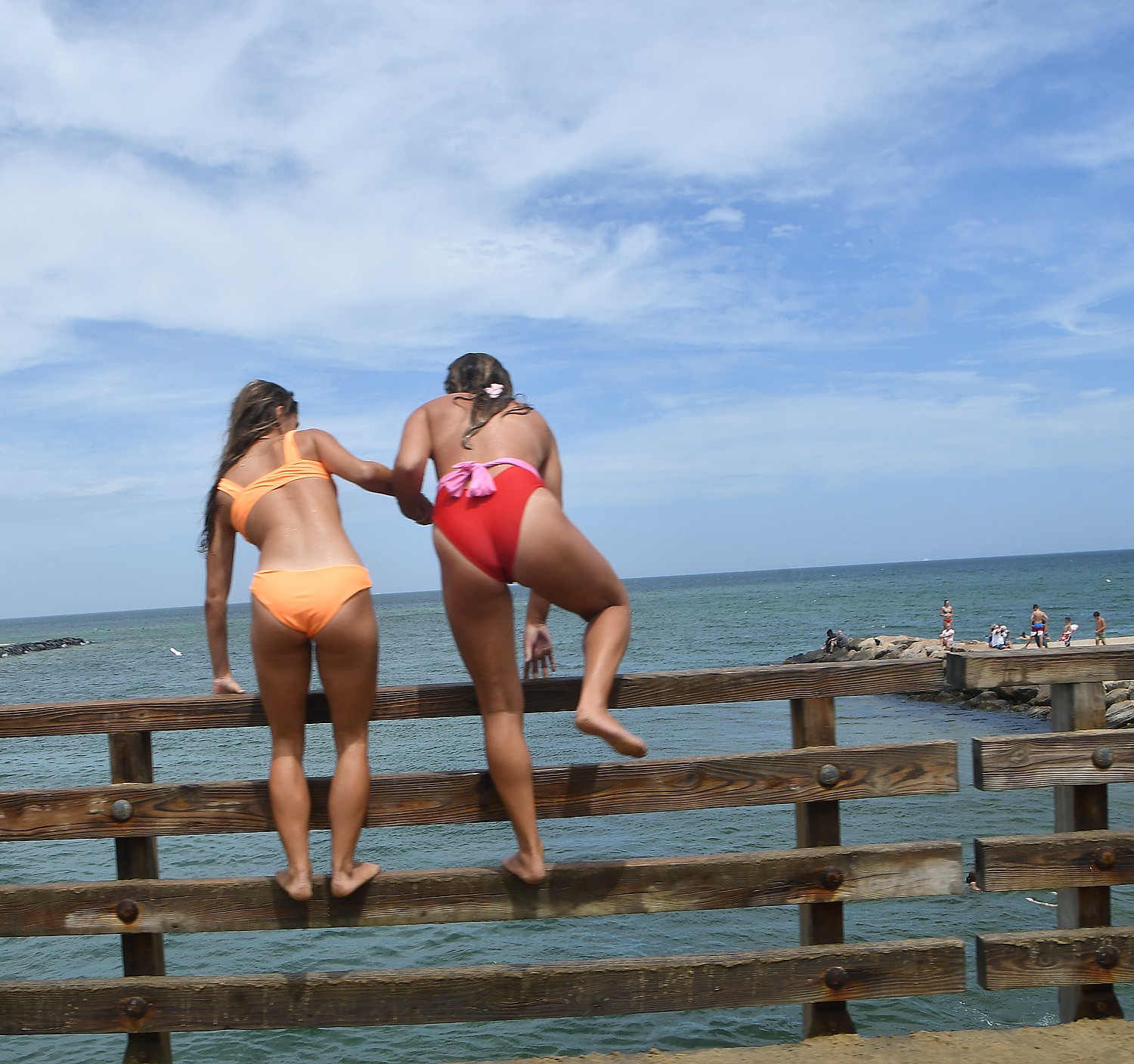
Edgartown reflects the Vineyard’s whaling tradition the most – in the many captain’s houses; the Old Whaling Church (now a performance venue); the lighthouse. There is a uniformity in Edgartown that is mandated by town code: the houses have to be white or shingled, the trim can only be black, green or navy blue.

But in the 1860s whaling collapsed – the ships had to travel further and further away, petroleum was discovered in Pennsylvania in 1859, the Civil War came and ships were blockaded – and the Vineyard had to look again for a new industry. It turned out to be tourism. For Martha’s Vineyard, that began in Oak Bluffs.
Perhaps one of the quaintest institutions on the Vineyard is the Martha’s Vineyard Camp-Meeting Association, which held its first camp-meeting in August 1835 in the Wesleyan Grove, in what is today Oak Bluffs where the Tabernacle stands.
Founded by the Methodist church, the campground began with pitched tents, then canvas on wood platforms, and then cottages that were gorgeously decorated in gingerbread patterns (like family crests, the patterns usually make a statement) and gay colors. These homes have been in their families for generations (they own the cottage, but not the land).
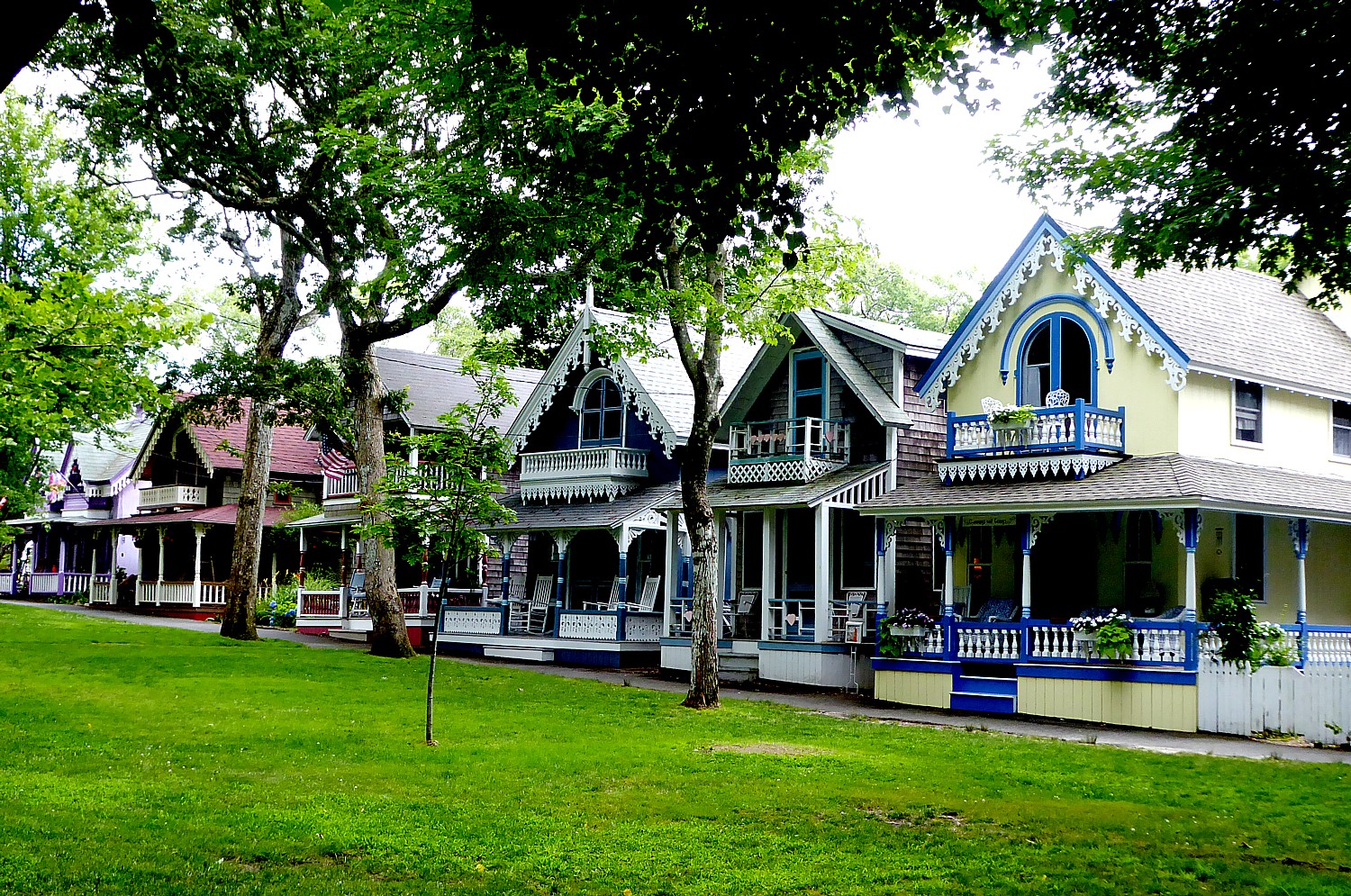
It was, in its way, the beginning of tourism, and when whaling fell apart for Edgartown, Linda says, Edgartown wanted in on Oak Bluffs’ good fortune. A railroad was built in 1874 between Oak Bluffs wharf to Edgartown, then to Katama and on to South Beach (still the best beach on the island). The railroad operated until 1897; eventually, a rail line was linked to New York (discontinued in 1917 and the rails sold to the government for iron). (Today, Martha’s Vineyard has an excellent public bus system.)
We arrive back into Oak Bluffs. Linda points out Inkwell Beach – one of the first integrated beaches in the country. “There is no discrimination here.”
Oak Bluffs, she says, is where Martin Luther King Jr. wrote some of his speeches.
Linda’s tour finishes at the Martha’s Vineyard Campmeeting Association’s Cottage Museum.
Oak Bluffs Wharf & Land Company, 9 Circuit Avenue Ext. Oak Bluffs, MA, 508-684-8595, http://vineyardhistory.com/.
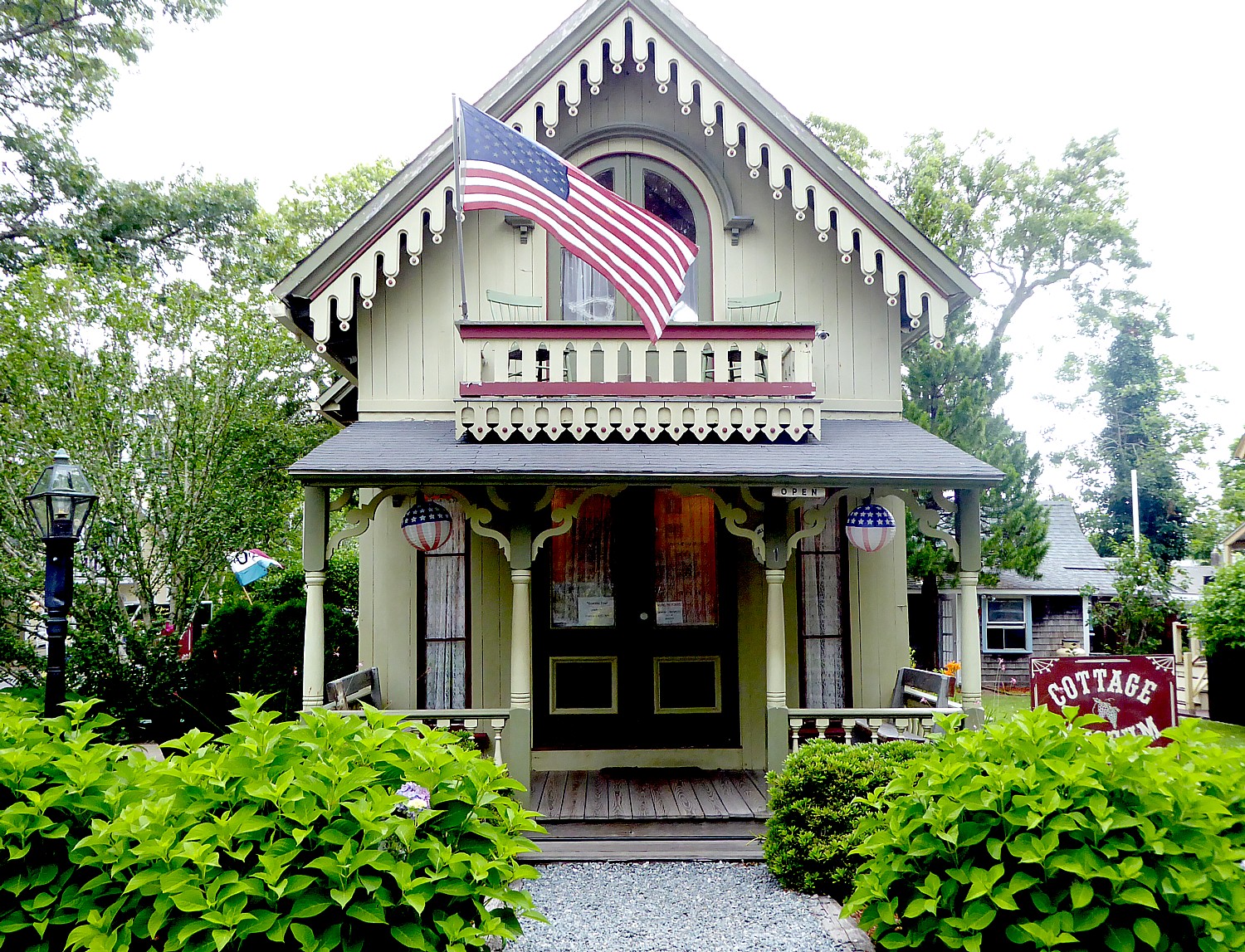
A Free Day
Grand Caribe’s Captain Patrick Moynihan has reshuffled our New England Islands voyage because of a storm which would make reaching Nantucket, 30 miles out to sea, too uncomfortable (10 foot seas) if not outright dangerous. But by staying over in Martha’s Vineyard for an extra day, he expects the weather to improve so we can sail there on Friday, as our last port of call.
The unexpected second day in Martha’s Vineyard is a gift, as if you had been given all these extra hours to do anything you want.
After two active days and anticipating another active day in Nantucket, Marty opts to spend the day relaxing on the ship.

I opt to return to one of my favorite places on the planet: Oak Bluffs. I love the color, the whimsy, the vibe. I have never seen a more open, welcoming place anywhere – it isn’t a coincidence that this is where Valerie Jarrett had her summer home, or that President Obama would summer on the Vineyard here every year during his presidency, or that there are so many media stars and celebrities (many who happen to be Jewish) who had vacation homes here.
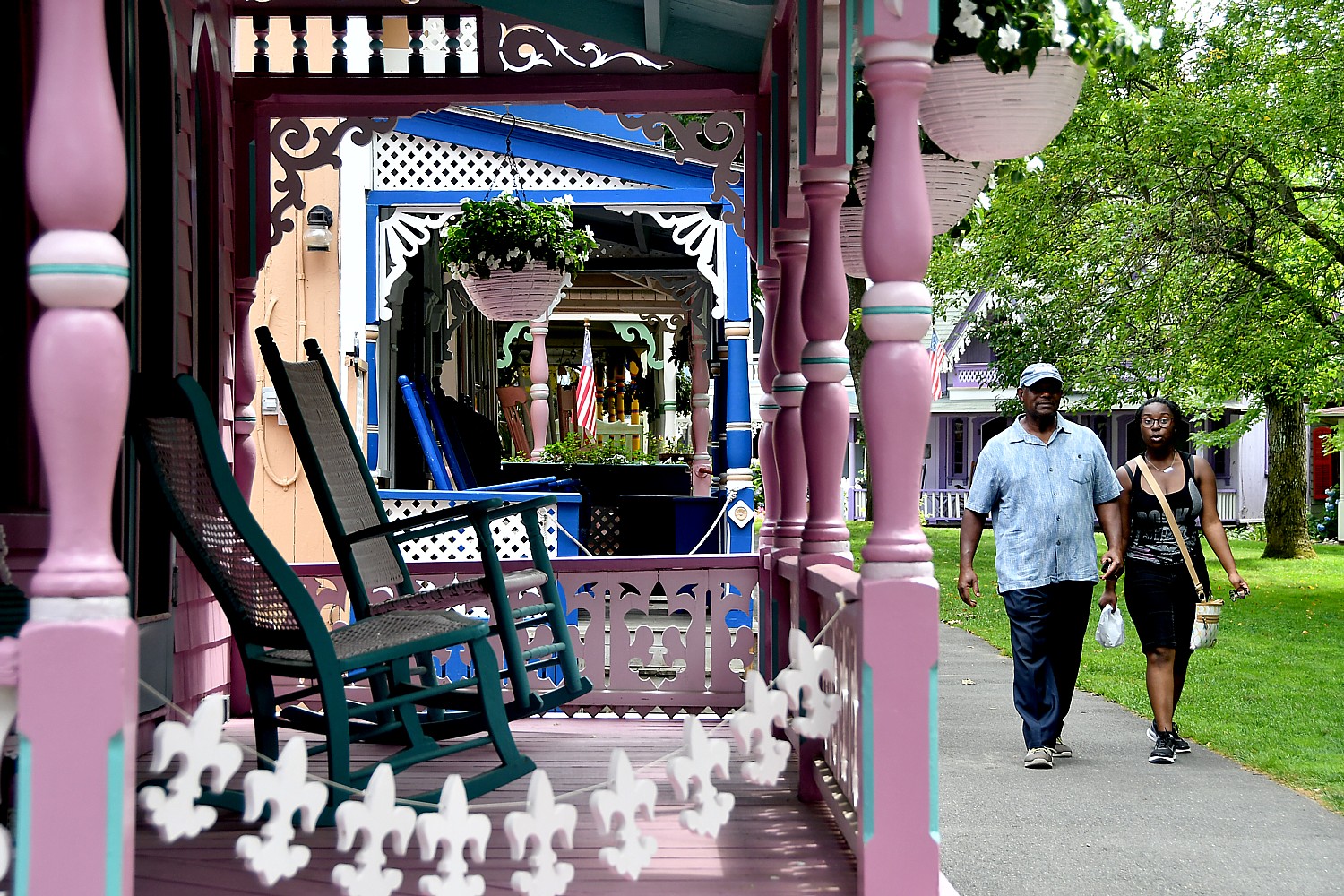
I cross the street from the marina where we are tied up at the pier, and hop the #13 bus to Oak Bluffs (it makes a loop to Edgartown).
I pick up the “Historic Walking Tour of Oak Bluffs” brochure from the information center at the bottom of Circuit Avenue, and find myself on what seems a scavenger hunt to find all the places.
I tour of the famous Campground, with all those gorgeous gingerbread cottages with names like Respite, Time Remembered, Alice’s Wonderland, and the Tabernacle, which can seat 2000 for a service.
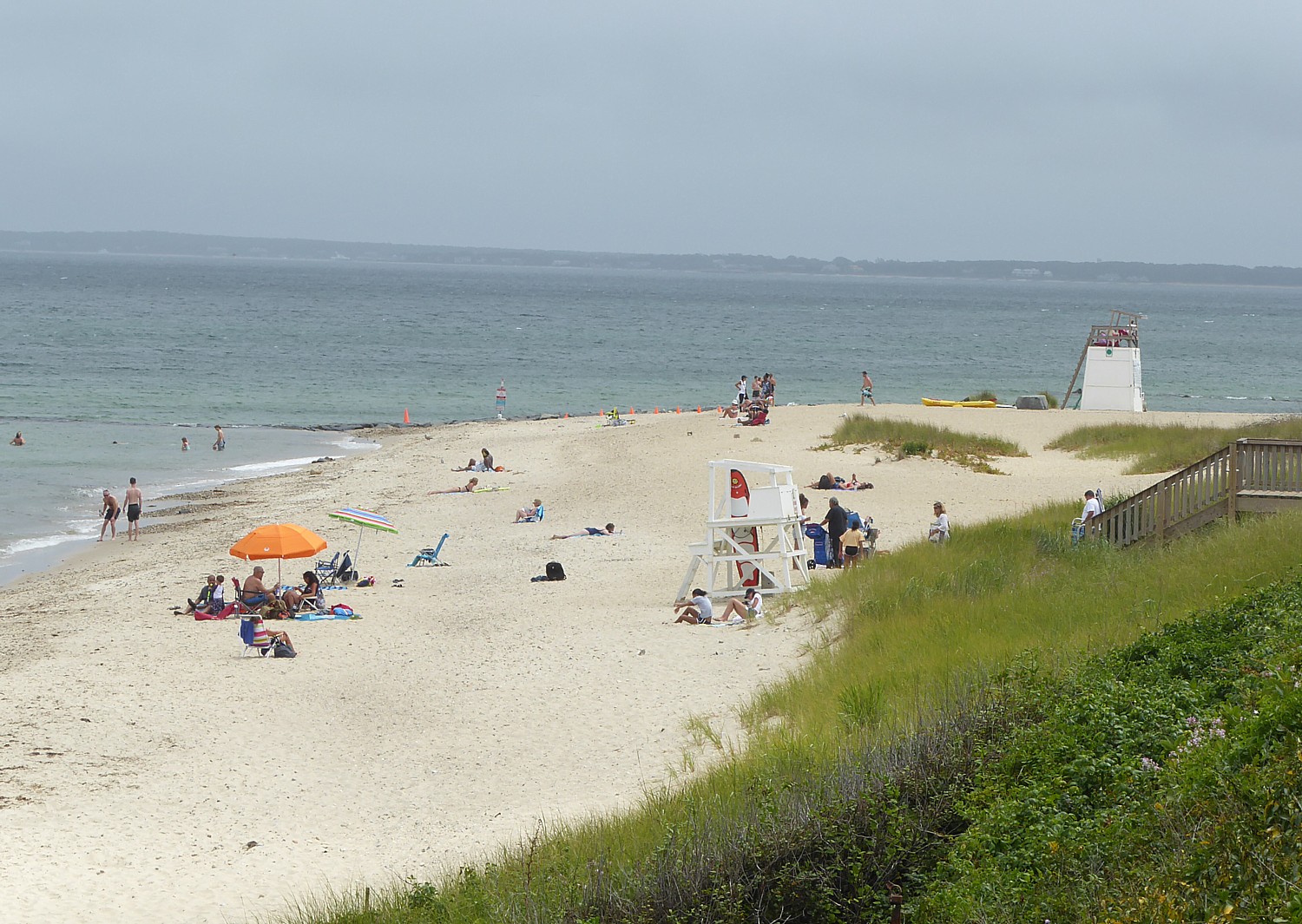
I make most of the 20 sites on the map, enjoying the notes about history, architecture and people.
I enjoy wandering along the Oak Bluffs Harbor promenade, and Inkwell Beach and take in the lovely shops along Circuit Avenue.
I stop in at the Flying Horses Carousel, the nation’s oldest platform carousel (a national landmark), that was constructed in 1876 by Charles Dare, and today is one of only two Dare carousels still in existence. Originally operated as a Coney Island, NY amusement, it was moved to its red barn in Oak Bluffs in 1884, delighting generations ever since. The carousel was acquired by the Preservation Trust in 1986 to prevent it from being dismantled and sold piecemeal to collectors of antique carved horses. The Trust undertook an extensive restoration to return the carousel to its original appearance, complete with the historic panel paintings that were done by a Dare factory artist. The horses were individually restored and feature real horsehair manes and tails, and distinctive objects in their glass eyes. The 1923 Wurlitzer Band Organ plays old-timey tunes on original paper rolls. The highlight of every ride is the chance to grab the lucky Brass Ring to win a free ride.
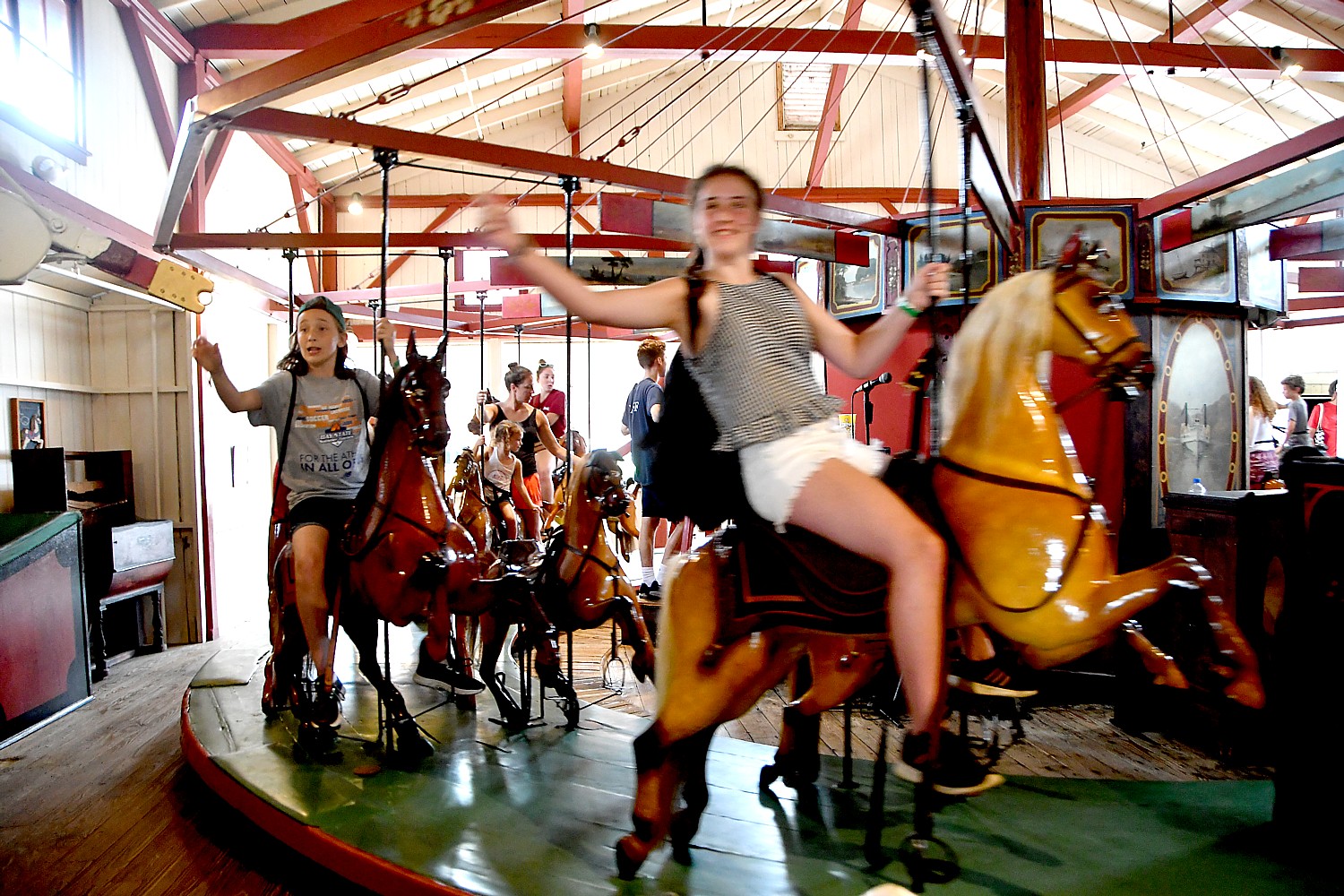
Flying Horses Carousel is one of 20 historic properties owned and managed by The Vineyard Trust. Among them: Alleys and The Grange in West Tisbury; The Old Whaling Church and Daniel Fisher House in Edgartown; and Union Chapel in Oak Bluffs.
I take the bus back to Vineyard Haven, getting off opposite the ferry terminal, and walk up to the village’s main street which has many charming boutiques. The local movie theater has a poster of “Jaws.”
It’s a short walk back to the ship – I pass the Benjamin & Gannon ship building and repair company – actually a small shack, but Linda had mentioned that they are very welcoming to visitors, and sure enough, am invited to look inside.
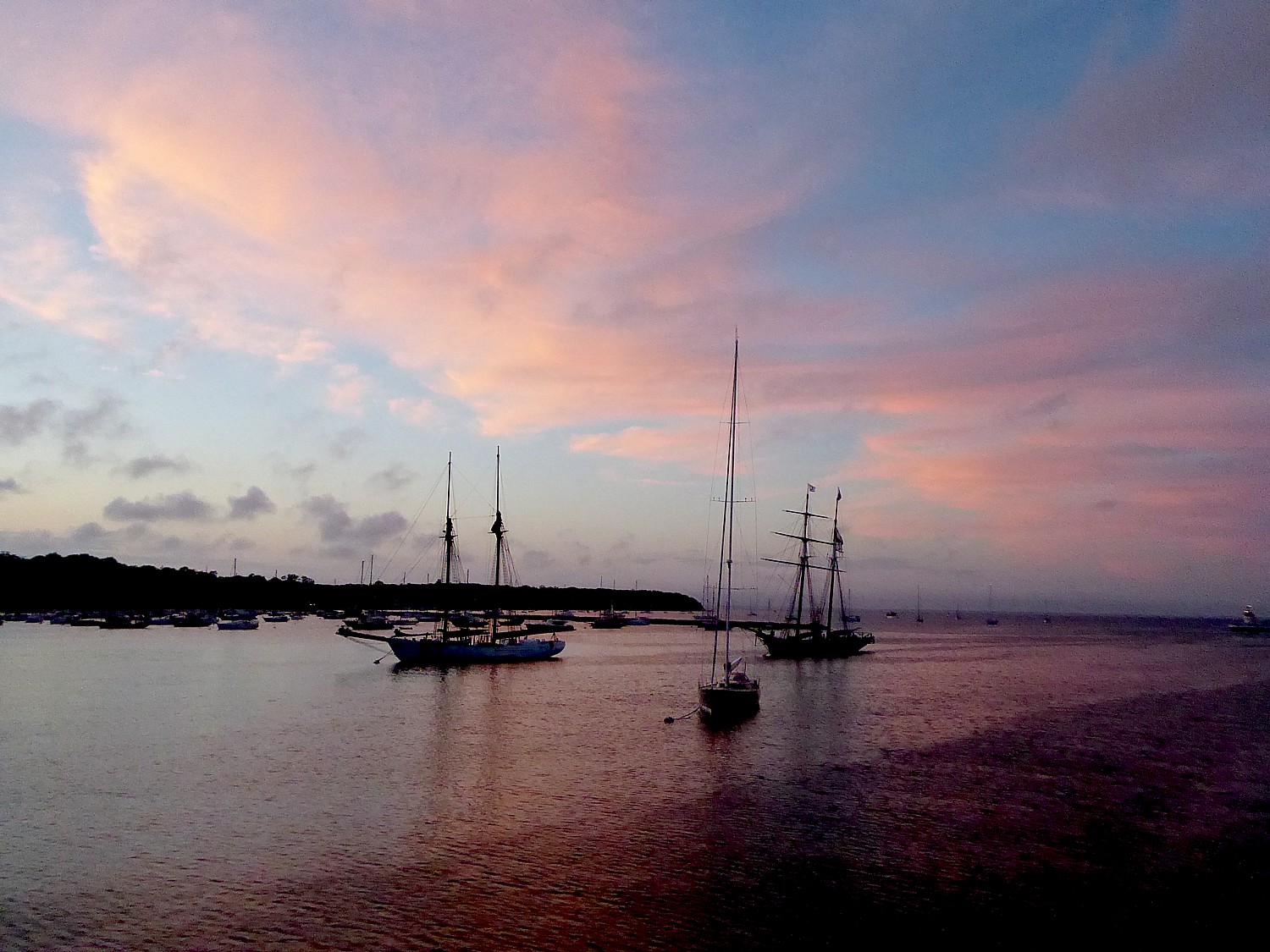
There’s so much to do on Martha’s Vineyard: with more time, I would bike (the island has 44 miles of bike and multi-user paths; several of our passengers took advantage of the rental bikes on board); 19 named beaches, 125 miles of coastline, fishing piers, kayaking, canoeing, windsurfing; horseback riding; guided cycling, natural, ecological, birding, historical, ghost and aerial tours; dozens of art galleries and boutiques, potters and artisans workshops and bookstores; visit an alpaca farm; wildlife and nature preserves, reptile and bird park, sanctuaries, arboretums, reservations; take the On-Time ferry to Chappaquiddick Island to explore Cape Poge and Wasque Reservations; visit Mytoi Japanese garden; the Vineyard’s Native American Wampanoag people at the Aquinnah Cultural Center, explore the Wampanoag Way, an Aquinnah Cultural Trail; follow the African American Heritage Trail; take in a performance at Vineyard Playhouse in Vineyard Haven or at the Old Whaling Church in Edgartown; take a cooking, dance, yoga, pilates, landscape painting class; circumnavigate the island or its surrounding waters aboard a sailboat, schooner, catamaran or motorboat; take a charter fishing or sailing excursion or lesson; attend a film, food & wine, artisans or other festival.

For more information, and to help plan a visit, contact Martha’s Vineyard Chamber of Commerce, 24 Beach Road, Vineyard Haven, MA 02568, 508-693-0085, 800-505-4815, info@mvy.com, www.mvy.com.
The Grande Caribe sails on to Nantucket. Blount Small Ship Adventures, 461 Water Street, Warren, Rhode Island 02885, 800-556-7450 or 401-247-0955, info@blountsmallshipadventures.com, www.blountsmallshipadventures.com).
See also:
Endlessly Fascinating, Newport RI, Playground for the Rich, Makes its Attractions Accessible
_____________________________
© 2018 Travel Features Syndicate, a division of Workstyles, Inc. All rights reserved. Visit goingplacesfarandnear.com, www.huffingtonpost.com/author/karen-rubin , and travelwritersmagazine.com/TravelFeaturesSyndicate/. Blogging at goingplacesnearandfar.wordpress.com and moralcompasstravel.info. Send comments or questions to FamTravLtr@aol.com. Tweet @TravelFeatures. ‘Like’ us at facebook.com/NewsPhotoFeatures
